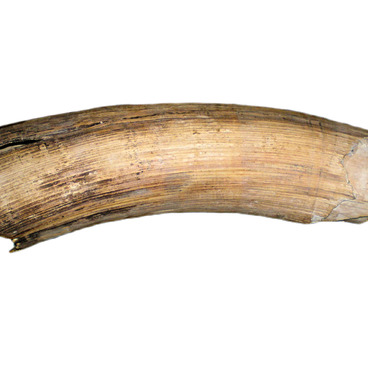Fragment of mammoth teeth
A tooth is a bone formation, an organ in the mouth for biting and chewing food. The base of the tooth is destroyed, the surface consists of plates of light brown color. on the other side of the tooth, the roots are visible in two rows, dark brown in color.
Mammoths are herbivores. The lack of fodder in winter was made up for by shrubs, branches and bark of both deciduous and coniferous trees. With the help of the trunk, like modern elephants, plants were pulled out and the food ended up in the oral cavity — in the hollow between the teeth.
The tooth, shaped like a grater, ground the food to fine particles. Despite its huge size, the mammoth had only 4 teeth: 2 were in the upper and 2 in the lower jaw of the mammoth. During their lives, relatives of elephants changed their teeth up to 6 times. The mammoth lived for about 60 years, it turns out that every 10 years there is a change of teeth. Baby teeth in small mammoths are small — it fits in the palm of a person.
A tooth is a bone formation, an organ in the mouth for biting and chewing food. The base of the tooth is destroyed, the surface consists of plates of light brown color. on the other side of the tooth, the roots are visible in two rows, dark brown in color.
Mammoths are herbivores. The lack of fodder in winter was made up for by shrubs, branches and bark of both deciduous and coniferous trees. With the help of the trunk, like modern elephants, plants were pulled out and the food ended up in the oral cavity — in the hollow between the teeth.
The tooth, shaped like a grater, ground the food to fine particles. Despite its huge size, the mammoth had only 4 teeth: 2 were in the upper and 2 in the lower jaw of the mammoth. During their lives, relatives of elephants changed their teeth up to 6 times. The mammoth lived for about 60 years, it turns out that every 10 years there is a change of teeth. Baby teeth in small mammoths are small — it fits in the palm of a person.


